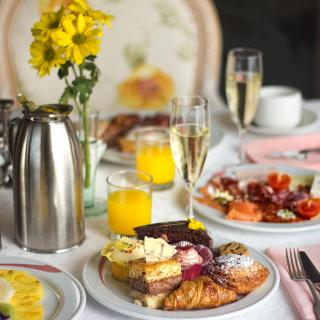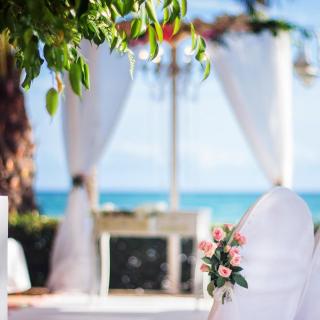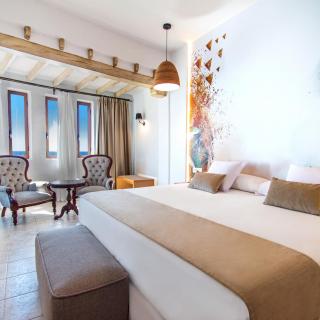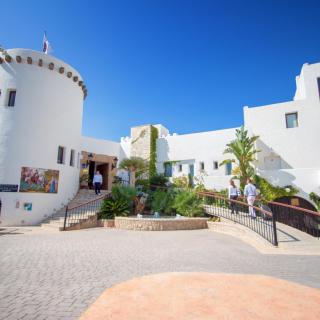13/05/2025
The language of cutlery: Dining etiquette at the table
Surely on many occasions you have had to go to an elegant lunch or dinner, or a social event of considerable importance like a wedding. Have you ever asked yourself what characteristic dining etiquette you should follow when you sit down to eat? Although it's a series of classic, standardized rules, it never hurts to know the hidden language behind cutlery. Depending on its position on the plate, the waiter will receive different information.

All of this will also imply a certain degree of refinement, which will allow you to move naturally at any type of social event and at any level.
Although the Hotel Montíboli is a place known for its exquisite taste, it's not necessary to follow such a strict protocol when enjoying a snack or a cocktail at the La Proa bar as when you come to enjoy the signature delicacies at the Emperador Restaurant.
You can follow this protocol more faithfully, or not as strictly, but it's clear that knowing the language of cutlery will always be beneficial to your social standing. This language is based on patterns of behavior that, no matter how long it takes, will always be well-received and will form part of that code of good manners. In short, you'll look great in the eyes of other diners.
What does the position of the cutlery mean? Depending on where and where you place your cutlery on your plate, you are conveying different information. It's an elegant way to indicate your current stage of the meal or your level of satisfaction with the dishes. Beyond words, reviews, or tips
Etiquette at the table: The position of the cutlery and its correct use
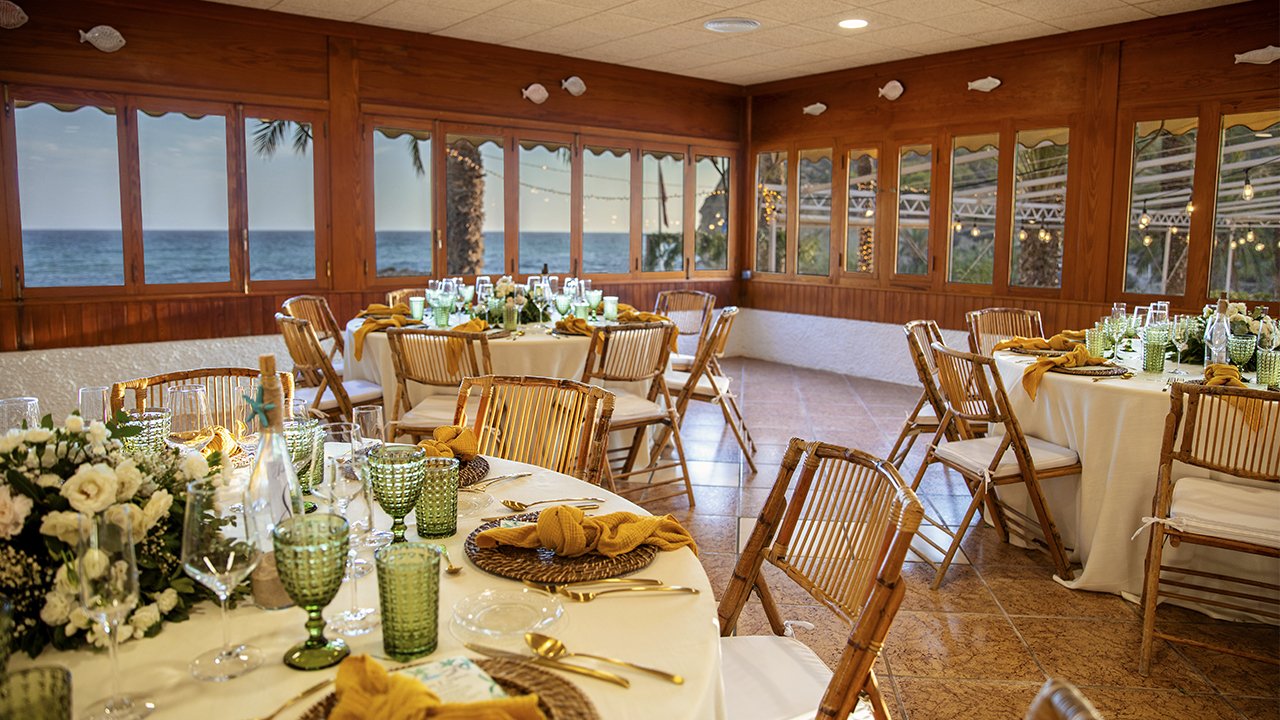
The rules of table etiquette are very simple, and we will start with the position of the cutlery on the table: as you can see, in front of you is a plate, surrounded by the corresponding cutlery: spoons, knives and forks.
If it is a simple meal, the table etiquette is basic utensils on each side of the plate. But if it is an important and/or long meal, it is very likely that you will find more cutlery surrounding it.
Regarding the position of the cutlery on the table, to the right you will find the spoons and knives, always starting with the spoon on the far right, a small knife for starters (just to the side), and on the left, the traditional table knife (in both cases with the edges towards the inside of the table).
The same applies with the forks, which will always go to the left of the plate, placed in the order that will be used starting or salad from the outside.
Above the spoon and knives, to the right, you'll find two glasses. The one on the right is always for white wine, and the one on the left is for red wine. A little further to the left, you'll find a smaller glass for water.
In front of your plate, you'll have a fork, and on it, a spoon (both for dessert). To the left of it, you'll have your bread plate, and placed on it, a small knife for spreading butter.
All cutlery should be placed at a distance of approx. 4cm.
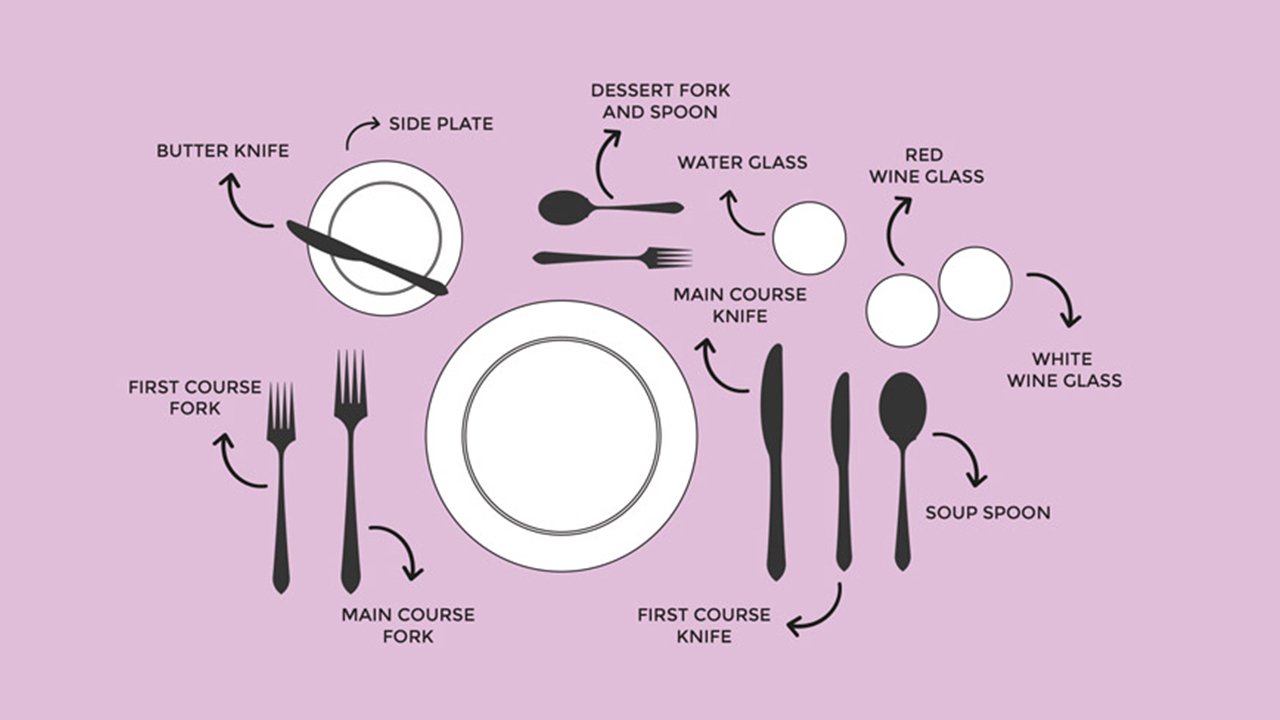
It’s time to eat, where shall I start? The correct use of cutlery has a trick: always use the utensils on the outside first and working your way inward. If there’s a spoon on the far right, then this will be for soup, gazpacho, etc.
As for the starters, the same thing applies work your way from the outside in.
The same goes for the glasses, if you are serving both red and White wine, set glasses right to left in the order used, White wine for the first course and fish dishes on the outside, then for the red wine next.
Although in many cases, dessert utensils aren't placed on the table until the moment to savor that happy ending, protocol places them on the table from the beginning. Therefore, the utensils that go on top of the plate are the last ones you should use at the table. If you want to avoid one of the most common mistakes on these occasions, you should definitely use one of the dessert utensils for the starters.
The language of the cutlery on the table

The language of the cutlery is very interesting and useful when it comes to socializing. Here are a few tips to get it right.
Imagine that during lunch or dinner you want to take a break. What should I do with the cutlery during the break? You should always place the cutlery on the plate, and never on its edges or the tablecloth. The position of these cutlery, generally the knife and fork, should form the sides of a triangle, as if ten to four on a clock.
When you have finished eating a course, and you are ready for the next one, the correct thing is to place the knife and fork forming the shape of a cross, with the fork facing up and the knife to the left.
If you wish to show your appreciation, you can position the cutlery to the right. This way you will indicating to the staff that the food has been to your liking. But there are those who clearly show that the food has not been up to par, and for this the correct thing is to place the cutlery in the same position as in case of when you are taking a break but introducing in this case the tip of the knife between the teeth of the fork.
As for the positioning of the cutlery at the end of a meal, it consists simply by placing the knife and fork straight up and down in the centre of the plate, with which we are implying that we have finished and that the plate can be removed.
Last but not least we have the dessert, you will find that the cutlery is situated above the plate as mentioned above.
Now all that's left is for dessert. If we're having a formal meal, we'll use two pieces of cutlery placed on the top (or front) of the plate, but we'll use a dessert spoon if it's a soft dessert like ice cream or cake.
The correct use of a Napkin

As you know, a napkin is an indispensable at any meal, Napkin placement for each place setting is also an essential part of proper table etiquette.
But where should it be placed? It can be placed in different places, either on the plate or on one side, but never, for example, inside a glass or cup. You've probably seen it somewhere, but it's a completely unofficial custom.
Whether it be to the right or to the left of the plate, the important thing is that the name or anagram that represents the brand of the restaurant be seen, if you have it.
If you’re not sure how to place your napkin, here are some easy guide lines to follow: pick it up as soon as you are seated, unfold and place across your lap. Now, if during your meal you have to get up, the ideal thing is that you leave it slightly folded to the right of the plate (never to the left, or on your chair).
Something you should never do is wrap it around your neck like a bib. Not only is this an unattractive custom, but it also denotes poor manners. In fact, even if the intention is to avoid staining your clothes, it's even more inappropriate to eat with your napkin draped over your chest. It's best to leave these customs for other types of events where protocol does require a napkin or bib to be worn around the neck while eating, such as at a calçotada (a typical dish and food event of the western region of Catalonia).
Another very common question is that of when the napkin should be used. The answer is simple: only for wiping your hands and dabbing your mouth.
There’s not much to it, no matter how old we get, table Manners is one of those areas of knowledge that can make us feel a Little overwhelmed, good table etiquette can go a long way.

Looking for an excuse to put these table etiquette tips into practice? Without a doubt, the Emperador Restaurant at the Montíboli Hotel in Villajoyosa is the ideal place to start. In addition to enjoying stunning views of the Mediterranean Sea in an excellent atmosphere, you can also taste signature cuisine with delicious and exquisite flavors.

As you can see, following table etiquette isn't difficult at all. From now on, you'll know exactly how to act in every situation with our simple etiquette guidelines that will undoubtedly make you stand out. It's up to you to put them into practice at your next social gatherings and enjoy these distinguished events in total comfort.





